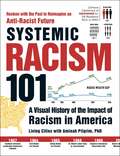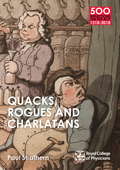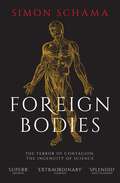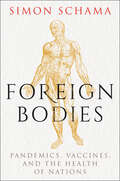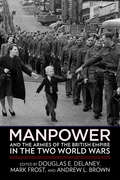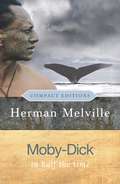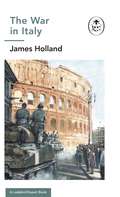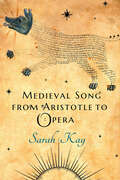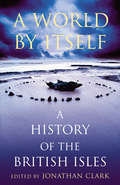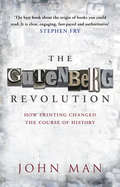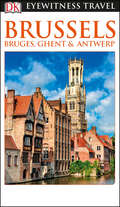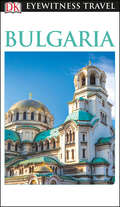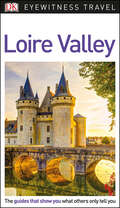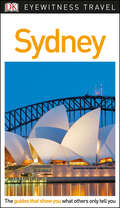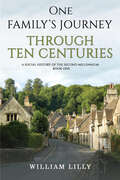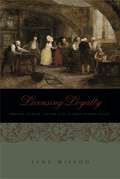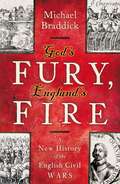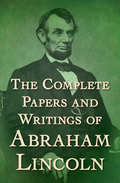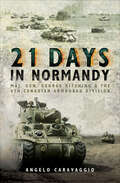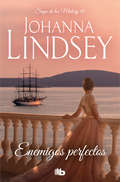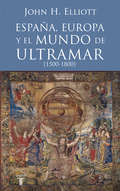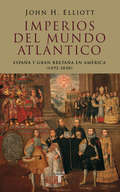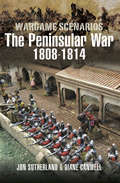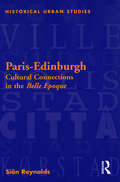- Table View
- List View
Systemic Racism 101: A Visual History of the Impact of Racism in America
by Living Cities Aminah PilgrimDiscover how—and why—Black, Indigenous, and people of color in America experience societal, economic, and infrastructural inequality throughout history covering everything from Columbus&’s arrival in 1492 to the War on Drugs to the Black Lives Matter movement.From reparations to the prison industrial complex and redlining, there are a lot of high-level concepts to systemic racism that are hard to digest. At a time where everyone is inundated with information on structural racism, it can be hard to know where to start or how to visualize the disenfranchisement of BIPOC Americans. In Systemic Racism 101, you will find infographic spreads alongside explanatory text to help you visualize and truly understand societal, economic, and structural racism—along with what we can do to change it. Starting from the discovery of America in 1492, through the Civil Rights movement, all the way to the criminal justice reform today, this book has everything you need to know about the continued fight for equality.
Quacks, Rogues and Charlatans of the RCP (500 Reflections on the RCP, 1518-2018 #3)
by Mr Paul StrathernThe Royal College of Physicians celebrates its 500th anniversary in 2018, and to observe this landmark is publishing this series of ten books. Each of the books focuses on fifty themed elements that have contributed to making the RCP what it is today, together adding up to 500 reflections on 500 years. Some of the people, ideas, objects and manuscripts featured are directly connected to the College, while others have had an influence that can still be felt in its work. This third book in the series is a lively tour of some of the colourful characters and dubious cures that have littered the College's 500-year history, and highlights the role the College has played in regulating the medical profession.
Foreign Bodies: Pandemics, Vaccines and the Health of Nations
by Simon SchamaCities and countries engulfed by panic and death, desperate for vaccines but fearful of what inoculation may bring. This is what the world has just gone through with Covid-19. But as Simon Schama shows in his epic history of vulnerable humanity caught between the terror of contagion and the ingenuity of science, it has happened before. Characteristically, with Schama the message is delivered through gripping, page-turning stories set in the eighteenth and nineteenth centuries: smallpox strikes London; cholera hits Paris; plague comes to India. Threading through the scenes of terror, suffering and hope – in hospitals and prisons, palaces and slums – are an unforgettable cast of characters: a philosopher-playwright burning up with smallpox in a country chateau; a vaccinating doctor paying house calls in Halifax; a woman doctor in south India driving her inoculator-carriage through the stricken streets as dead monkeys drop from the trees. But we are also in the labs when great, life-saving breakthroughs happen, in Paris, Hong Kong and Mumbai. At the heart of it all, an unsung hero: Waldemar Haffkine. A gun-toting Jewish student in Odesa turned microbiologist at the Pasteur Institute, hailed in England as &‘the saviour of mankind&’ for vaccinating millions against cholera and bubonic plague in British India while being cold-shouldered by the medical establishment of the Raj. Creator of the world&’s first mass production line of vaccines in Mumbai he is tragically brought down in an act of shocking injustice. Foreign Bodies crosses borders between east and west, Asia and Europe, the worlds of rich and poor, politics and science. Its thrilling story carries with it the credo of its author on the interconnectedness of humanity and nature; of the powerful and the people. Ultimately, Schama says, as we face the challenges of our times together, &‘there are no foreigners, only familiars&’.
Foreign Bodies: Pandemics, Vaccines, and the Health of Nations
by Simon SchamaA vibrant cultural history investigating the tangled and complex history of pandemics and vaccines, by bestselling author and historian Simon SchamaCities and countries engulfed by panic and death, desperate for vaccines but fearful of what inoculation may bring. This is what the world has just gone through with Covid-19. But as Simon Schama shows in his epic history of vulnerable humanity caught between the terror of contagion and the ingenuity of science, it has happened before. Characteristically, Schama’s message is delivered through gripping, page-turning stories set in the eighteenth and nineteenth centuries: smallpox strikes London; cholera hits Paris; plague comes to India. Threading through the scenes of terror, suffering and hope – in hospitals and prisons, palaces, and slums – are an unforgettable cast of characters: a philosopher-playwright burning up with smallpox in a country chateau; a vaccinating doctor paying house calls in Halifax; a woman doctor in south India driving her inoculator-carriage through the stricken streets as dead monkeys drop from the trees. But we are also in the labs when great, life-saving breakthroughs happen, in Paris, Hong Kong, and Mumbai. At the heart of it all is an unsung hero: Waldemar Haffkine, a gun-toting Jewish student in Odesa turned microbiologist at the Pasteur Institute, hailed in England as “the saviour of mankind” for vaccinating millions against cholera and bubonic plague in British India while being cold-shouldered by the medical establishment of the Raj. Creator of the world’s first mass production line of vaccines in Mumbai, he is tragically brought down in an act of shocking injustice. Foreign Bodies crosses borders between east and west, Asia and Europe, the worlds of rich and poor, politics and science. Its thrilling story carries with it the credo of its author on the interconnectedness of humanity and nature; of the powerful and the people. Ultimately, Schama says, as we face the challenges of our times together, “there are no foreigners, only familiars.”
Manpower and the Armies of the British Empire in the Two World Wars
by Douglas E. Delaney, Mark Frost, and Andrew L. BrownIn the first and only examination of how the British Empire and Commonwealth sustained its soldiers before, during, and after both world wars, a cast of leading military historians explores how the empire mobilized manpower to recruit workers, care for veterans, and transform factory workers and farmers into riflemen. Raising armies is more than counting people, putting them in uniform, and assigning them to formations. It demands efficient measures for recruitment, registration, and assignment. It requires processes for transforming common people into soldiers and then producing officers, staffs, and commanders to lead them. It necessitates balancing the needs of the armed services with industry and agriculture. And, often overlooked but illuminated incisively here, raising armies relies on medical services for mending wounded soldiers and programs and pensions to look after them when demobilized.Manpower and the Armies of the British Empire in the Two World Wars is a transnational look at how the empire did not always get these things right. But through trial, error, analysis, and introspection, it levied the large armies needed to prosecute both wars.Contributors Paul R. Bartrop, Charles Booth, Jean Bou, Daniel Byers, Kent Fedorowich, Jonathan Fennell, Meghan Fitzpatrick, Richard S. Grayson, Ian McGibbon, Jessica Meyer, Emma Newlands, Kaushik Roy, Roger Sarty, Gary Sheffield, Ian van der Waag
Moby Dickk: Moby Dick, Afrikaans Edition
by Herman MelvilleMoby Dick in half the timeMoby Dick is the tale of one man's fatal obsession and his willingness to sacrifice his life and that of his crew to achieve his goal. The story follows the fortunes of Captain Ahab and the eccentric crew of a whaling ship, The Pequod. The ship is on its last voyage in pursuit of Moby Dick - the great white whale which wounded Ahab in the past is his quarry now. The battle with the elements, the sea, the dangerous confrontations of the whale hunts are embodied in the thrilling narration of the survivor Ishmael.
The War in Italy: (WW2 #8) (The Ladybird Expert Series #14)
by James Holland* PRE-ORDER YOUR COPY NOW *- Why did the Allies decide to invade Southern Italy?- How did the weather and Italian terrain complicate the fighting?- How did General Mark Clark's Allied Armies win the final battle?Discover the mounting conflict and complex campaigns of the war in Italy. From Operation HUSKY to Clark's final offensive, the Allied campaign tightened the noose around Nazi Germany and saw the end of Italian Fascism, though it was at a cost of high civilian casualty and destruction.AN EPIC OF GRIT, DETERMINATION AND SACRIFICEWritten by historian, author and broadcaster James Holland and with immersive illustrations by Keith Burns, THE WAR IN ITALY 1943-1945 is an accessible and enthralling introduction to these critical battles and their impact on the outcome of World War II
Medieval Song from Aristotle to Opera
by Sarah KayFocusing on songs by the troubadours and trouvères from the twelfth to the fourteenth centuries, Medieval Song from Aristotle to Opera contends that song is not best analyzed as "words plus music" but rather as a distinctive way of sounding words. Rather than situating them in their immediate period, Sarah Kay fruitfully listens for and traces crosscurrents between medieval French and Occitan songs and both earlier poetry and much later opera. Reflecting on a song's songlike quality—as, for example, the sound of light in the dawn sky, as breathed by beasts, as sirenlike in its perils—Kay reimagines the diversity of songs from this period, which include inset lyrics in medieval French narratives and the works of Guillaume de Machaut, as works that are as much desired and imagined as they are actually sung and heard. Kay understands song in terms of breath, the constellations, the animal soul, and life itself. Her method also draws inspiration from opera, especially those that inventively recreate medieval song, arguing for a perspective on the manuscripts that transmit medieval song as instances of multimedia, quasi-operatic performances. Medieval Song from Aristotle to Opera features a companion website (cornellpress.manifoldapp.org/projects/medieval-song) hosting twenty-four audio or video recordings, realized by professional musicians specializing in early music, of pieces discussed in the book, together with performance scores, performance reflections, and translations of all recorded texts. These audiovisual materials represent an extension in practice of the research aims of the book—to better understand the sung dimension of medieval song.
A World by Itself: A History of the British Isles
by Jonathan ClarkScholarship on the history of the British Isles is currently experiencing a golden age. The breakdown of modernism and the eclipse of both the Marxist tradition and the 'Whig interpretation' that sees all history as progress, combined with the trajectories of nationalism in Ireland, Scotland and Wales, have generated unprecedented intellectual activity. Nor has the world stood still: the collapse of communism, the issue of integration into the EU, and the advance of multiculturalism have led more and more people in the English speaking world as a whole to sense that their collective landscape now looks profoundly different from that inhabited by their ancestors even a few decades ago.In A World By Itself, six distinguished historians offer the most definitive and compelling history of the British Isles to date. Tracing the political, religious and material cultures from the Romans to the present day, this is at once an urgent reassessment of our shared past, and an inspirational celebration of British history. It focuses on the major themes and most dramatic moments of the last two millenia: the rise and fall of empires; reformation, revolution and restoration; wars both civil and global; and the enduring question of what it means to be British.
The Gutenberg Revolution
by John ManIn 1450, all Europe's books were handcopied and amounted to only a few thousand. By 1500 they were printed, and numbered in their millions. The invention of one man - Johann Gutenberg - had caused a revolution. Printing by movable type was a discovery waiting to happen.Born in 1400 in Mainz, Germany, Gutenberg struggled against a background of plague and religious upheaval to bring his remarkable invention to light. His story is full of paradox: his ambition was to reunite all Christendom, but his invention shattered it; he aimed to make a fortune, but was cruelly denied the fruits of his life's work. Yet history remembers him as a visionary; his discovery marks the beginning of the modern world.
DK Eyewitness Travel Guide Brussels, Bruges, Ghent and Antwerp (Travel Guide)
by DK EyewitnessDK Eyewitness Travel Guide: Brussels, Bruges, Ghent and Antwerp is your indispensable guide to this beautiful part of the world. The fully updated guide includes unique cutaways, floor plans and reconstructions of the must-see sites, plus street-by-street maps of the major cities. The new-look guide is also packed with photographs and illustrations leading you straight to the best attractions. The uniquely visual DK Eyewitness Travel Guide will help you to discover everything city-to-city, from local festivals and markets to day trips around the countryside. Detailed listings will guide you to the best hotels, restaurants, bars, and shops for all budgets, while detailed practical information will help you to get around, whether by train, bus, or car. Plus, DK's excellent insider tips and essential local information will help you explore every corner of Brussels, Bruges, Ghent and Antwerp effortlessly. With hundreds of full-color photographs, hand-drawn illustrations, and custom maps that brighten every page, DK Eyewitness Travel Guide: Brussels, Bruges, Ghent and Antwerp truly shows you this region as no one else can.
DK Eyewitness Travel Guide Bulgaria (Travel Guide)
by DK EyewitnessThe lavishly illustrated DK Eyewitness Travel Guide: Bulgaria is all you need to visit this surprisingly undiscovered country rich in natural resources, history and culture. Soak up the many flavors of Bulgaria region by region, from Bulgaria's capital, Sofia, to the ancient countryside villages of Koprivshtitsa and Veliko Turnovo. Sights, beaches, markets and festivals are listed town by town. DK Eyewitness Travel Guide: Bulgaria includes 3-D cutaway illustrations, floor plans, and reconstructions of must-see sights, plus full-color city maps enable you to explore the capital and regions in depth. Walks, scenic routes, and thematic tours show you how to make the most of the country's spectacular mountain ranges and dramatic Black Sea coastline. Special features explain the history, cultural heritage, traditional festivals and local cuisine to ensure you won't miss a thing. With hundreds of full-color photographs, hand-drawn illustrations and custom maps that brighten every page, DK Eyewitness Travel Guide: Bulgaria shows you this country as no one else can.
DK Eyewitness Travel Guide Loire Valley (Travel Guide)
by DK EyewitnessDK Eyewitness Travel Guides: the most maps, photography, and illustrations of any guide.DK Eyewitness Travel Guide: Loire Valley is your in-depth guide to the very best of the Loire Valley in France.Whether you're on the hunt for a bike ride through the valley, a visit to fortresses and cathedrals, or a relaxing afternoon shopping at local markets, our DK Eyewitness Travel Guide has everything you'll need to experience the best of the Loire Valley. Explore old world villages and storybook chateaux, try local delicacies and superb wines, or take a walking tour and experience stunning views: We have everything you'll need to make the most of a trip to the Loire Valley on any budget.Discover DK Eyewitness Travel Guide: Loire Valley • Detailed itineraries and "don't miss" destination highlights at a glance. • Illustrated cutaway 3-D drawings of important sights. • Floor plans and guided visitor information for major museums. • Guided walking tours, local drink and dining specialties to try, things to do, and places to eat, drink, and shop by area. • Area maps marked with sights. • Insights into history and culture to help you understand the stories behind the sights. • Hotel and restaurant listings highlight DK Choice special recommendations. With hundreds of full-color photographs, hand-drawn illustrations, and custom maps that illuminate every page, DK Eyewitness Travel Guide: Loire Valley truly shows you the Loire Valley as no one else can.Recommended: For an in-depth guidebook to France, check out DK Eyewitness Travel Guide: France, which offers the most complete coverage of France, trip-planning itineraries, and more.
DK Eyewitness Travel Guide Sydney (Travel Guide)
by DK EyewitnessDK Eyewitness Travel Guide: Sydney is your in-depth guide to the very best of Sydney. Take in the major sights, from the Sydney Opera House to the Taronga Zoo; go on a boat tour for your chance to cruise on the sparkling waters of Sydney Harbour; or simply soak up the sun on the white sands of Bondi Beach.Discover DK Eyewitness Travel Guide: Sydney: • Detailed itineraries and "don't-miss" destination highlights at a glance. • Illustrated cutaway 3-D drawings of important sights. • Floor plans and guided visitor information for major museums. • Free, color pull-out map (print edition) marked with sights, a selected sight and street index, public transit map, practical information on getting around, and a distance chart for measuring walking distances . • Guided walking tours, local drink and dining specialties to try, things to do, and places to eat, drink, and shop by area. • Area maps marked with sights and restaurants . • Detailed city maps include street finder index for easy navigation . • Insights into history and culture to help you understand the stories behind the sights. • Suggested day-trips and itineraries to explore beyond the city . • Hotel and restaurant listings highlight DK Choice special recommendations. With hundreds of full-color photographs, hand-drawn illustrations, and custom maps that illuminate every page, DK Eyewitness Travel Guide: Sydney truly shows you this city as no one else can.Recommend: For a pocket guidebook to Sydney, check out DK Eyewitness Travel Guide: Top 10 Sydney, which is packed with dozens of top 10 lists, ensuring you make the most of your time and experience the best of everything.
One Family’s Journey Through Ten Centuries: A social history of the second millennium – Book One
by William LillyWe trace one family, generation by generation, throughout the one thousand years of the second millennium. The trilogy sets the family within its social environment, describing its migration from the continent, and across England, Scotland, and Ireland to settle in the New World. From that we get a vivid picture of what affected, motivated, worried, and encouraged this Saxon family and how they coped. Since the migration of this family was typical for the time, this study is relevant to millions of people in the United Kingdom, Canada, and the United States, whose ancestors followed the same general migratory path. Book I specifically covers the feudal period in the Middle Ages (1000 – 1560), where a feudal autocrat and an avaricious pope, between them, owned and controlled everything. Throughout, the family became our witnesses to many of the historic events of the feudal period: the Battle of Hastings, Anglo-Saxon resistance, the plague, the Little Ice Age, the Great Starvation, Guilds, the building of great cathedrals and castles, and the gradual decline in the king’s power and control. In 1067 William the Conqueror appointed Honfroi de Insula de L’lle as the Dominus of the area around the feudal village of Combe, Wiltshire. He permitted Honfroi to live and build a motte and bailey castle there to assist in keeping the peace. The front image is Castle Combe as it appears today.
Licensing Loyalty: Printers, Patrons, and the State in Early Modern France (Penn State Series in the History of the Book)
by Jane McLeodIn Licensing Loyalty, historian Jane McLeod explores the evolution of the idea that the royal government of eighteenth-century France had much to fear from the rise of print culture. She argues that early modern French printers helped foster this view as they struggled to negotiate a place in the expanding bureaucratic apparatus of the French state. Printers in the provinces and in Paris relentlessly lobbied the government, hoping to convince authorities that printing done by their commercial rivals posed a serious threat to both monarchy and morality. By examining the French state’s policy of licensing printers and the mutually influential relationships between officials and printers, McLeod sheds light on our understanding of the limits of French absolutism and the uses of print culture in the political life of provincial France.
God's Fury, England's Fire: A New History of the English Civil Wars
by Michael BraddickThe sequence of civil wars that ripped England apart in the seventeenth century was the single most traumatic event in this country between the medieval Black Death and the two world wars. Indeed, it is likely that a greater percentage of the population were killed in the civil wars than in the First World War. This sense of overwhelming trauma gives this major new history its title: God’s Fury, England’s Fire. The name of a pamphlet written after the king’s surrender, it sums up the widespread feeling within England that the seemingly endless nightmare that had destroyed families, towns and livelihoods was ordained by a vengeful God – that the people of England had sinned and were now being punished. As with all civil wars, however, ‘God’s fury’ could support or destroy either side in the conflict. Was God angry at Charles I for failing to support the true, protestant, religion and refusing to work with Parliament? Or was God angry with those who had dared challenge His anointed Sovereign?Michael Braddick’s remarkable book gives the reader a vivid and enduring sense both of what it was like to live through events of uncontrollable violence and what really animated the different sides. The killing of Charles I and the declaration of a republic – events which even now seem in an English context utterly astounding – were by no means the only outcomes, and Braddick brilliantly describes the twists and turns that led to the most radical solutions of all to the country’s political implosion. He also describes very effectively the influence of events in Scotland, Ireland and the European mainland on the conflict in England.God’s Fury, England’s Fire allows readers to understand once more the events that have so fundamentally marked this country and which still resonate centuries after their bloody ending.
The Complete Papers and Writings of Abraham Lincoln: Comprising His Speeches, Letters, State Papers And Miscellaneous Writings (classic Reprint)
by Abraham LincolnA complete documentary archive of Abraham Lincoln&’s writings, from historic speeches to personal letters and telegrams. Collected here are numerous documents written by Abraham Lincoln from 1832 to 1865, over the course of his long career as a lawyer, statesman, and president of the United States. From the man who led the nation through the Civil War and into its Reconstruction, Lincoln&’s written statements—including the Emancipation Proclamation and the Gettysburg Address—are some of the most significant documents in American history. Included with these works are telegrams to politicians and wartime generals as well as personal letters discussing a range of topics, from youth and marriage to depression. This extensive collection is not only an excellent documentary history of America&’s greatest trial as a nation, but also an opportunity to enjoy the intellect and wit of one of America&’s greatest orators. As Theodore Roosevelt says in his introductory comments, &“Lincoln&’s deeds and words are not only of consuming interest to the historian, but should be intimately known to every man engaged in the hard practical work of American political life.&” This ebook has been professionally proofread to ensure accuracy and readability on all devices.
21 Days in Normandy: Maj. Gen. George Kitching & the 4th Canadian Armoured Division
by Angelo Caravaggio&“Right[s] some of the injustices done to the Canadians&” on their maligned actions during the Invasion of Normandy. &“An absorbing account&” (Firetrench). The Canadian Fourth Armoured Division crossed the Channel in July 1944 to support the invading forces and assist in the Allied attempts to break out of the Normandy beachhead. They were heavily engaged in Operation Totalize and Operation Tractable but have been criticized for their failure to close the &‘Falaise gap&’ and complete the entrapment of withdrawing German forces. Their commander, Major General George Kitching, was relieved of his command after just twenty-one days in action. Angelo Caravaggio reexamines the division&’s performance and particularly that of its leadership. Using new information, he establishes that, despite entering battle for the first time during one of the most challenging phases of Allied operations in August 1944, the 4th Armoured Division, under Kitching&’s leadership, proved resilient and adaptive in overcoming the volatile and unpredictable nature of warfare in Normandy. The combat operations of August 1944 transformed the division into a battle-hardened combat formation that would later distinguish itself through its ability to generate a sustained drive across France out of the chaos and destruction of the Normandy battles. &“The author uses new information to demonstrate the unit did show flexibility and adapted to the battlefield quickly, despite being thrown into battle during one of the Normandy Campaign&’s critical phases. His arguments are detailed and based upon in-depth research, and the book has many detailed maps to help the reader follow the action.&” —Warfare History Network
Enemigos perfectos (Saga de los Malory #Volumen 10)
by Johanna LindseyLos Malory son una familia de granujas apuestos y aventureros libertinos, y damas con carácter. Una saga romántica sobre la aristocracia británica del siglo XIX, creada por el talento incomparable de Johanna Lindsey, una de las autoras más populares del género. Enemigos perfectos es la décima entrega de la emocionante «Saga de los Malory», sin duda la saga familiar más popular del género romántico. Nueve años atrás, Richard Allen huyó de Inglaterra y de su dominante padre. Decidido a vivir su propia vida, terminó por unirse a una banda de piratas cazadores de tesoros en el Caribe. Allí adoptó la identidad de un francés seductor y despreocupado, Jean Paul. Cuando regresa de incógnito a Inglaterra para lleva a cabo una tarea urgente, se enamora de Georgina Malory, una mujer casada. Pero su osado intento de cortejarla en un baile de disfraces se convierte en el peor error de su vida porque lo pone en presencia de otra hermosa mujer. Emocionada porque sus abogados por fin han encontrado la manera de liberarla de un compromiso matrimonial indeseado, Julia Miller espera encontrar al hombre de su vida en el baile de su amiga Georgina. Cautivada por un francés enmascarado, no puede evitar seguir a ese misterioso hombre...
España, Europa y el mundo de ultramar (1500-1800)
by John H. ElliottJohn H. Elliott, el más prestigioso hispanista británico, reflexiona con estos ensayos, charlas y artículos sobre la política, la cultura y las ideas en Europa y el mundo colonial. Autor de algunos de los trabajos más influyentes sobre el mundo hispánico, Elliott siempre ha sabido analizar la historia de España y el mundo hispánico con una mirada original y profunda, y es autor de algunos de los trabajos más influyentes en este campo. Este volumen recoge escritos que reflejan sus investigaciones más recientes y su pensamiento sobre la política, el arte, la cultura y las ideas en Europa y el mundo colonial entre 1500 y 1800. El libro contiene catorce ensayos, charlas y artículos de impresionante calado y frescura, escritos con el característico brío de Elliott. Organizado en torno a tres ejes -los comienzos de la Europa moderna, la expansión europea en ultramar y la obra y contexto histórico de El Greco, Velázquez, Rubens y Van Dyck-, este volumen ofrece una excelente visión de conjunto de los temas que han centrado el interés de Elliott a lo largo de una carrera distinguida por su brillantez y espíritu innovador. Reseña:«Elliott es infatigable en su investigación, global en su visión, magistral en la organización del material e infalible identificando las evidencias más reveladoras o representativas. En resumen, su labor académica es lo más cercano a la perfección que se puede encontrar.»Felipe Fernández-Armesto
Imperios del mundo atlántico: España y Gran Bretaña en América (1492-1830)
by John H. ElliottEl relato definitivo de la épica colonización europea de las Américas. Durante siglos, españoles y británicos levantaron sus respectivos imperios coloniales en América sobre las ruinas de las civilizaciones que encontraron y destruyeron al llegar allí. En más de una ocasión los historiadores han comparado ambas experiencias. Sin embargo, este libro es el primero en el que se hace esa comparación de los imperios americanos de España y Gran Bretaña de una forma sistemática desde sus inicios hasta el final del dominio español en América a comienzos del siglo XIX. El prestigioso historiador John H. Elliott identifica y explica tanto las similitudes como las diferencias que se dieron en el proceso colonizador, en el carácter de las sociedades coloniales, en los estilos distintivos del gobierno imperial, y en el desarrollo de los movimientos que condujeron a la independencia. Elliott estudia cómo las estructuras políticas, económicas y sociales de la América española de la británica acabaron pareciéndose a pesar de los rasgos que las separaban, y cómo todavía influyen en la América del siglo XXI. Con el estilo claro pero riguroso que caracteriza al autor, se abordan aquí los temas fundamentales del fenómeno de la colonización: el interés por los imperios, en boga en la época; el ángulo comparativo (el imperio británico y el español, América del Norte y América del Sur); el encuentro imperial y la resistencia local. En conjunto, un análisis experto en el que se combina la investigación en profundidad con una narración de lectura apasionante.
Restoration Plays and Players
by David RobertsIntroducing readers to the key texts, theatrical practice and context of late seventeenth-century drama, David Roberts combines literary and theatrical approaches to show how Restoration plays were written, performed, received and printed. Structured according to the 'life cycle' of the dramatic text, this book reproduces extracts from twenty-four of the most influential Restoration plays to provide readers with a comprehensive and colourful introduction to the period's drama. Roberts encourages readers to look beyond a limited canon of established plays and practice, and to see how Restoration Drama has been revived and adapted on the modern stage. Restoration Plays and Players is of great interest to undergraduate and non-specialist readers of seventeenth-century drama, Restoration literature and theatre studies.
Wargame Scenarios: The Peninsular War, 1808–1814
by Jonathan Sutherland Diane CanwellThe enjoyment of wargaming is greatly enhanced if the battles (games) are played within well thought-out scenarios. Instead of simply lining up evenly-matched armies and fighting to the death, the players can have realistic objectives (such as the capture of a vital piece of terrain or delaying a superior enemy to cover a retreat) and be confronted with more challenging tactical decisions. Devising such scenarios can take a lot of effort, and more critically, time, which is always in short supply. This book is designed to take the time and effort out of organising fascinating and challenging wargames set in the Peninsular War. rnrnIn addition to 20 carefully devised scenarios of varying size and complexity, this book contains a concise introduction to the theatre of operations and an integrated chronology of battles and campaigns, showing where the scenarios fit into the wider events. The scenarios and orders of battle are intended for use with Pen & Sword's own Napolenic wargame rules, Grand Battery, but they are easily adaptable for use with other leading systems.rnrn Briefing notes on the context of the battle and the dilemmas and objectives facing each commander.rn Orders of battle for each side and any other information required to set up. rnContents :rnrn Concise introduction to the Peninsular War with chronology to place the scenarios in context.rn 20 carefully devised scenarios of varying size and complexity.rn a wargamer-friendly map, showing players where to place terrain, buildings and other features that had an impact on the battlefield. It will also show initial dispositions (historical) and mark the point of entrance (or exit) of units during the battle. rn Clear win/lose/draw conditions.
Paris-Edinburgh: Cultural Connections in the Belle Epoque
by Siân ReynoldsBy the end of the nineteenth century, Paris was widely acknowledged as the cultural capital of the world, the home of avant-garde music and art, symbolist literature and bohemian culture. Edinburgh, by contrast, may still be thought of as a rather staid city of lawyers and Presbyterian ministers, academics and doctors. While its great days as a centre for the European Enlightenment may have been behind it, however, late Victorian Edinburgh was becoming the location for a new set of cultural institutions, with its own avant-garde, that corresponded with a renewed Scottish national consciousness. While Morningside was never going to be Montparnasse, the period known as the Belle Epoque was a time in both French and Scottish society when there were stirrings of non-conformity, which often clashed with a still powerful establishment. And in this respect, French bourgeois society could be as resistant to change as the suburbs of Edinburgh. With travel and communication becoming ever easier, a growing number of international contacts developed that allowed such new and radical cultural ideas to flourish. In a series of linked essays, based on research into contemporary archives, documents and publications in both countries, as well as on new developments in cultural research, this book explores an unexpected dimension of Scottish history, while also revealing the Scottish contribution to French history. In a broader sense, and particularly as regards gender, it considers what is meant by 'modern' or 'radical' in this period, without imposing any single model. In so doing, it seeks not to treat Paris-Edinburgh links in isolation, or to exaggerate them, but to use them to provide a fresh perspective on the internationalism of the Belle Epoque.
